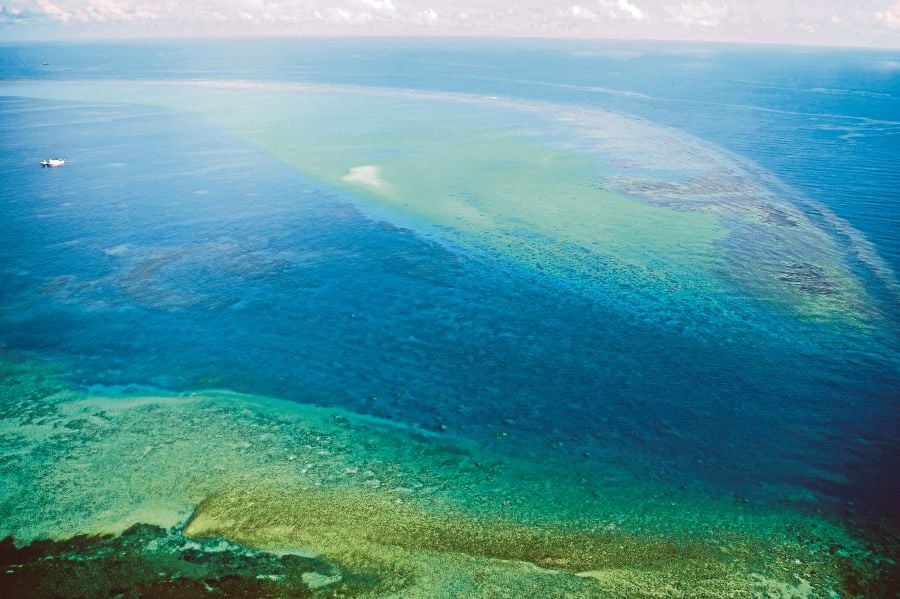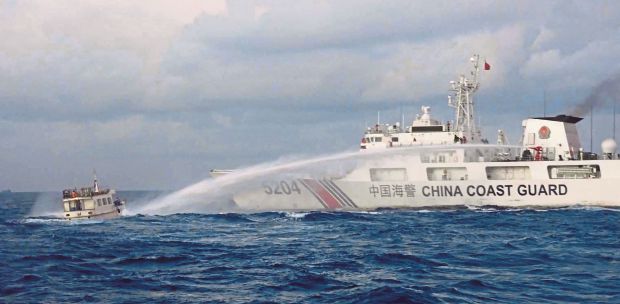EVER since he was a teenager, Filipino fisherman Rony Drio has been sailing into the heart of the South China Sea to fish at the Scarborough Shoal, a large atoll rich in fish stocks that has become one of Asia's most contested maritime features.
But now, 56-year-old Drio says, it has become increasingly difficult and dangerous to fish at the atoll — some 200km off the Filipino coast — because of aggressive action by China, which claims the disputed shoal.
Filipino fishermen in San Salvador Island in the Masinloc municipality told the Thomson Reuters Foundation that China was using speedboats and water cannon to block access to an area that is inside the Philippines exclusive economic zone but was seized by China in 2012.
The skirmishes are taking place as the Philippines steps up its defence posture in the South China Sea, an area long seen as a potential flashpoint between the United States and China.
The high seas drama has slashed the incomes of the fishermen of San Salvador Island. No longer able to fish freely at the atoll, and sometimes chased away before they have even caught anything, they are forced into the open sea.
This costs more in fuel, leading many into a vicious cycle where each trip leaves them more indebted and thus forced to travel further next time to catch more fish.
The fishermen are also no longer able to shelter from storms in the turquoise lagoon of the Scarborough Shoal, making their trips more dangerous.
"We were just trying to make a living but we were driven out. Many of us dread seeing China's coast guards," says Drio.
"Everything we have now is debt. If you had a debt from a fishing trip, you need to sail again so that you can pay for it and that incurs another debt ... It's a cycle."
Jimmy Tabat, another fisherman from Masinloc, says three days on the shoal used to yield enough fish to feed fishermen's families and leave them with some savings.
"Fishing trips inside the shoal consume less fuel and produce more fish than (in) the deeper open sea," says the 45-year-old.
The Scarborough Shoal is named after a British ship that was grounded here in 1748 but is known to Filipinos as Bajo de Masinloc or Panatag — a Tagalog word for "peaceful".
An international tribunal invalidated China's claim to 90 per cent of the South China Sea in 2016 but Beijing does not recognise the ruling.
Since it seized the shoal in 2012, it has maintained a constant deployment of coast guard and fishing trawlers.
There was some respite for Filipino fishermen after Rodrigo Duterte came to power in Manila in 2016 and relations with China improved.
Fishermen were allowed back to the shoal but tensions have mounted since Ferdinand Marcos Jr, who has forged closer ties with Washington, became president last year.
Drio says fishermen are suffering mentally, as well as economically, with some reporting anxiety attacks and trauma.
"I can only hope that we can fish freely again on the shoal with a peaceful mind," Drio says as he sits near his fishing boat on the coast of San Salvador.
Pamalakaya, a national alliance of fishermen, says fishermen in Zambales province have lost around 70 per cent of their income because of restrictions on access to the shallow, bountiful waters of the Scarborough Shoal.
Tabat says before 2012, a fisherman could earn 8,000 to 10,000 Philippine pesos a week but that has plunged to around 2,000 to 3,000 pesos, meaning it can take three weeks to catch enough fish to break even.
"We were fishing at a loss. At times we could take nothing home."
The Philippines' Bureau of Fisheries and Aquatic Resources says the South China Sea is an important fishing ground for more than 385,000 registered fishermen, contributing a total of 304,000 metric tonnes of fish from 2018 to 2022.
But it is now becoming "economically unfeasible" to fish in the area due to dwindling catches, destruction of coral reefs, harassment by Chinese vessels, and inclement weather, with fishermen unable to shelter in the shoal, the study says.
It also says China is destroying the coral reef at Scarborough through giant clam digging operations, in which coral reefs are pulverised to gather the clams underneath.
The writer is from Reuters news agency
The views expressed in this article are the author's own and do not necessarily reflect those of the New Straits Times





